
Etherborn is a beautiful exploration platformer from developer Altered Matter, and is coming to Nintendo Switch this year. With a combination of environment-based puzzles and gravity-defying traversal, Etherborn looks very promising. We talked to Samuel Cohen and Carles Massó from Altered Matter about the creative process behind the game.
Nintendo Life: Could you introduce yourselves to the good folks at NL?
Samuel Cohen and Carles Massó: Hi, we’re Samuel and Carles from Altered Matter, an independent video game studio from Barcelona. We’re two of the five people developing Etherborn, a gravity-shifting platformer where the levels are puzzles in themselves. Samuel is the art lead and level designer, and Carles the programming lead.
 Watch on YouTube
Watch on YouTubeSubscribe to Nintendo Life on YouTube841k
What themes did you explore and tone did you want to set when creating the world of Etherborn?
Samuel: In Etherborn you play as a voiceless being in search of a bodiless voice that’s calling out to you in the world. The most obvious theme is about the deconstruction of the self and the search for a definition that goes beyond conventions. However, there’s also more layers in it, related to humankind’s fear to the void and the unknown, and the things we do to overcome it. While Etherborn is not a narrative game, but we want the story bits to be somewhat meaningful.
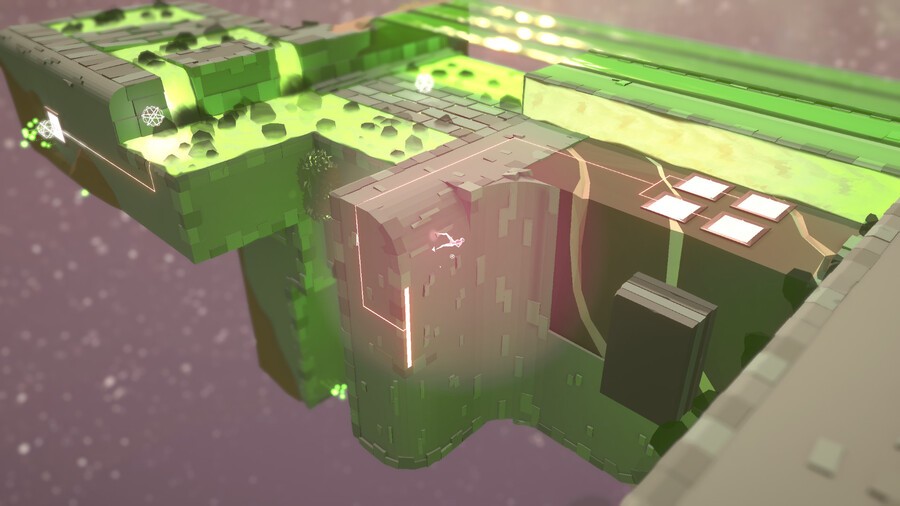
Regarding the tone, it’s pretty much related to the theme, since it’s all about mystery and discovery, generally with a relaxing component. Every single thing has gone through many changes during development, except our basic premises, which we have been pretty faithful to. One of those premises is precisely the intention to craft a meaningful world that stimulates the curiosity of the player and creates a 'sense of wonder'. We want to make worlds that beg to be discovered and understood, while also communicating that there’s probably more beyond what your eyes can see.
For the gameplay, the premise was to make a minimalistic puzzle gravity-shifting platformer where deep logic elements would revolve around understanding the structures you step on. While at first it all looks very simple and streamlined, there is a lot of complexity that you discover once you see how the movement ties in with the level design. You sort of have to play it to really understand it.

What influenced the character and environmental art style?
Samuel: The character’s body represents the fragility of a mind that has not yet developed the knowledge to understand itself. In a way, it’s an empty canvas, but not from a negative perspective, but one of hope. So she looks like she's composed of light, ether and veins. It’s definitely not designed to work as a visually appealing action figure, but as a concept. That’s also why she’s faceless, although I have to say there’s probably a lot of unconscious influence from some European artists. For example, I’ve always been attracted to the mystery and stillness of Malevich’s painting 'Complex Presentiment', which represents a faceless figure standing in a colorful setting. There’s also Giorgio De Chirico, who has some renderings of empty-faced mannequins.
And then there’s the pink. This one’s much easier: I love pink. Since… always. For me, pink represents a very simple and innocent joy, which I believe ties perfectly with a newborn that’s eagerly curious about her surroundings. As a kid, I was mocked for this taste at school quite a lot. So, now that I have the opportunity to make a game, the character emits pink light all over the place. Take that world, ha! Sadly, pink has become quite a trendy color lately, so revenge seems less potent now.
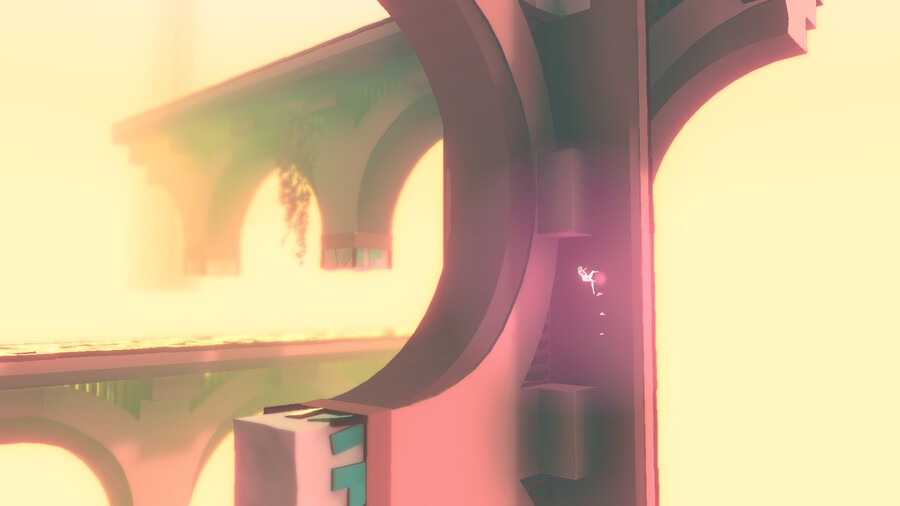
When it comes to the environments, there’s a bunch of video game references in Etherborn’s art. Some are intentional, while many of them are unconscious, but I guess it’s just how creativity works. There’s one level in particular that players often compare to Monument Valley, and I’m okay with it. It’s nice to be compared to someone you admire.
However, I’ll also say that a large part of my execution is inspired by painting, photography and cinema too, especially lighting and composition. Since the keyword for Etherborn is 'mystery', it makes perfect sense for me to create foggy scenery where you can’t see the horizon. This also allows me as an artist to play a lot more with surreal lights and colors. For this game, I’m not interested in doing clean separations between tones in every level, so I also play around with more organic and picturesque gradients. The weight of the light is pretty important in the art of this game. Zdzisław Beksiński has a lot to do with my taste for this, and as far as I’m concerned, he’s a favourite among game artists. For good reason.
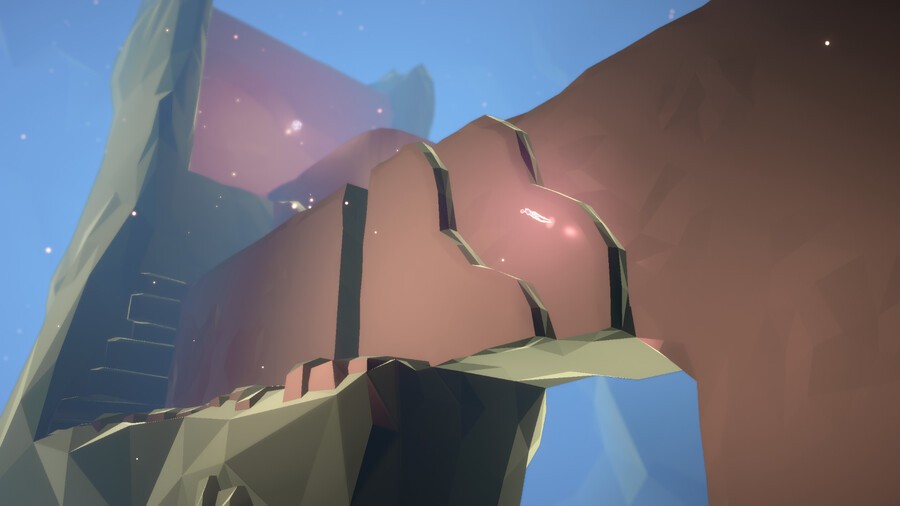
What is the balance of platforming and puzzle solving in relation to manipulating the environments?
Samuel: There is no exact line to draw between one thing and the other, but we can tell you it’s not heavily focused on eye-hand coordination, like a Mario game would be. Here, the platforming elements are usually your tools for navigating the levels, while the game world itself is more based on your spatial reasoning. It’s not about synchronizing jumps, but about calculating routes and falls.
What was the inspiration for the characters main objective?
Samuel: Curiously, the story is one of the aspects of the game where we struggled the most to decide. Even if Etherborn is not intended to be a narrative-driven game, we wanted to express something meaningful with the bits we show, rather than using the story as an excuse. However, every idea we were putting on the table had quite a different shape that someone in the team didn’t like, so we kept developing the core mechanics for the prototype while brainstorming once in a while.

At one point, we realised that all our stories were about the same idea at their heart. Overcoming obstacles, breaking bounds, and finding a meaning. In reality, meaning is what narrative arts usually seek, but it wasn’t so obvious for us three years ago. Once this was settled, it was easier to lean towards a more abstract writing, like a prose poem rather than a usual narration. This story ended up feeding some artistic and design decisions too, for a more coherent result. I don’t remember quite well where the idea of the voiceless body with the bodiless voice came from, but I think it appeared while listening to Leonard Cohen’s 'If It Be Your Will'.
How does the narrative fit into the environments we will be exploring?
Samuel: The structure is pretty simple: at the end of each level, you’ll have visions of this voice speaking to you. Even if it’s a platformer, we think both things tie pretty well, since the gameplay, after all, is about exploring a whole new world in many different perspectives until you get an understanding of it.
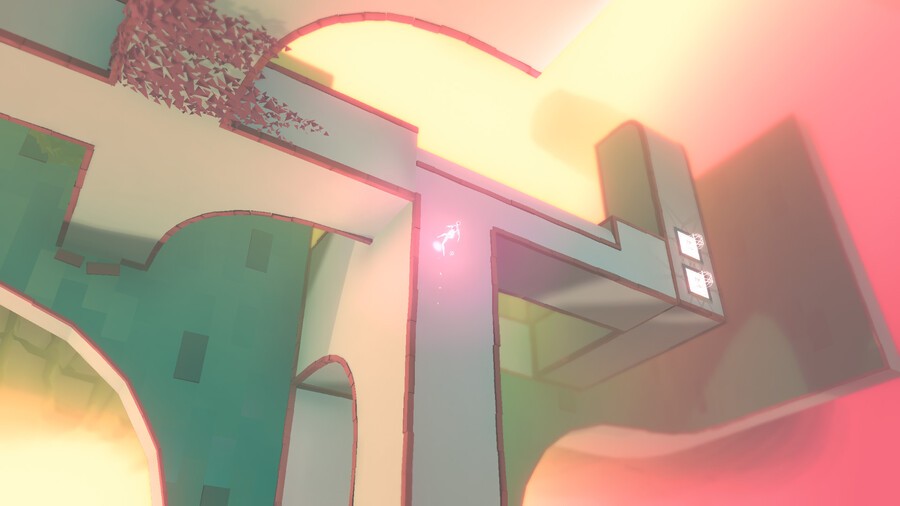
Was it logistically challenging or exciting and fun to have such freedom with designing environments and building areas?
Samuel: Challenging? Yes! Absolutely. Many of the levels in the game were massive headaches to design, but they’re the kind of headaches that make you feel proud of what you did once it’s all actually working. Being the artist and the level designer at the same time allows me a huge degree of control over the scenery. I can go back and forth from segments more focused on the mood, to others more based on logic, to those where both things are equally balanced.
Since the game is based on exploring environments and understanding their logic, it’s quite important to make those environments interesting, and I’m not talking just about colors, which I love using. I also heavily look at the shapes and compositions I add to try to diversify the levels. It’s here that I often find myself taking inspiration from some of my favourite artists that have really pushed the boundaries on shapes and composition - Spanish sculptor Eduardo Chillida, Russian painters such as Kazimir Malevich or Olga Rozanova, Le Corbusier and the Brutalist architecture, etc.
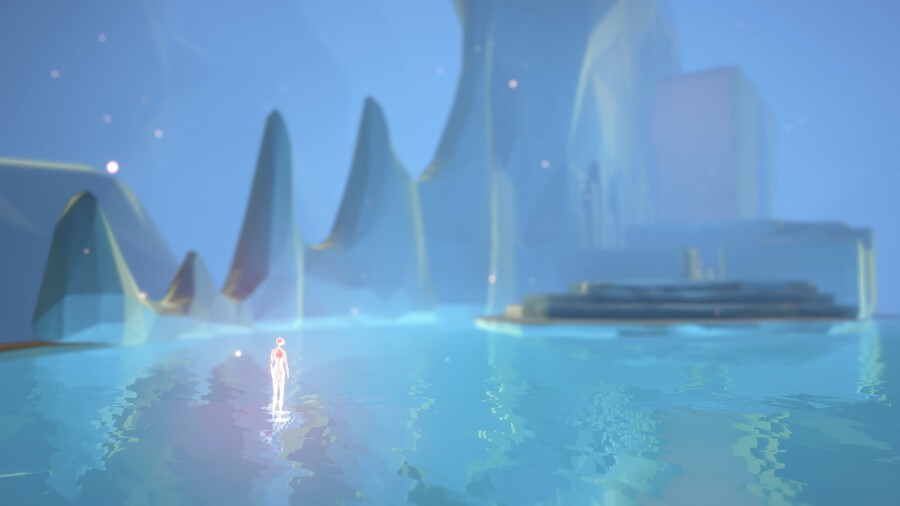
How important is the sense of scale in relation to the characters journey and interaction with potential characters?
Samuel: The sense of scale is crucial. It’s not just an aesthetic decision, but also a conceptual one. Bear in mind that in Etherborn, you’re a newborn character looking for a way to find her own self. So, as I said, she’s an empty canvas in the middle of a huge and unknown world, which is the true protagonist. You may be able to move some structures, but your real triumph is getting an understanding of the world and being able to move through it. We wanted Etherborn to be the complete opposite of a power fantasy.
How much does the use of gravity affect the gameplay and does it differ progressing through the environments?
Carles: In general, all gameplay elements are affected by this gravity behavior. You are rooted to any surface you can walk on, which means that we can move between multiples planes - the floor and a wall, for example - if there’s a rounded or smooth connection between both.
Behavior is what defines the basic gameplay and the majority of the puzzles: you have to think how to move around the level in order to reach an item, from which 'side' you need to jump to get to a certain switch, etc. Especially since some elements, like these switches that trigger movements on certain structures, are affected by this gravity too: they only work when the player is on top of them in the correct gravity; they won’t react to you if you are just in front of them.
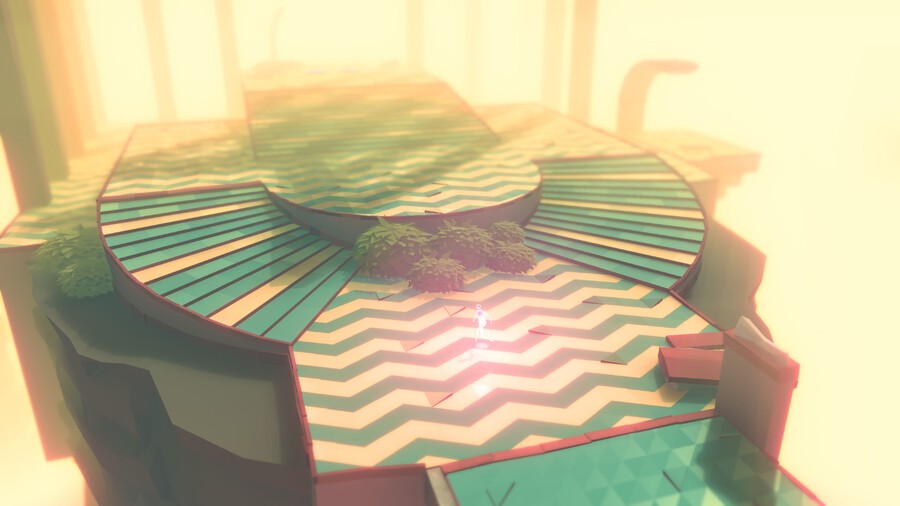
Were there any puzzle ideas or environments you experimented with but didn’t include?
Carles: Plenty. Early on in development we played with different gameplay mechanics or types of puzzles that are not present in the final game. As the development progressed, we saw that there were just too many of them to make a coherent game, and that some of them weren’t actually adding enough value into the core gameplay. This way we ended up trimming unnecessary elements and focusing on the ideas that we thought that, together with the world, character and storyline, could create the main experience we were aiming for.
As with all games, at some point we had a list of possible environments and puzzles that could fit in the game theme, and we started work on some that haven’t made the final cut. In the end, the selected environments are the ones that we thought could offer the most interesting combination of level design and puzzles, colors, music and visual impact.
Are there any other characters we will meet?
Carles: Besides the main character that you control, the only other character is the Voice that calls out to you throughout your journey.
What role will they play?
Carles: Voice plays an important role in Etherborn as it’s the entity that is essentially pushing you to discover more. It is the first thing you hear at the beginning of the game, and so you’ll need to advance through the levels to reach it and fully understand what is going on.
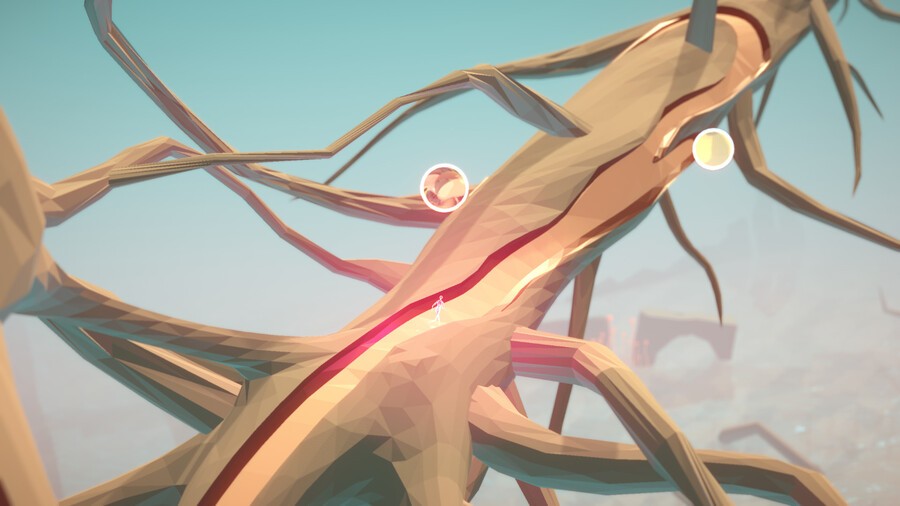
Are there any Switch specific features or extras you considered?
Carles: We can’t confirm anything specific at the moment, but since the control layout of the game is quite streamlined (moving the character, running, jumping and activating switches) we would like to make the game playable in all the possible controller modes of the Switch, even with just a single Joy-Con. It would be interesting to work with some of the other features of the console to add more detail in the gameplay, such as the HD Rumble for example, so we’ll see.
When can we expect to see Etherborn on Nintendo Switch?
Carles: Etherborn is expected to release at the end of this year. We can’t go into more detail right now, but we’ll share more news on the Switch launch in the future.
We'd like to thank Samuel and Carles for their time. Etherborn will arrive on Nintendo Switch in 2018. Let us know what you make of Etherborn's development journey below...





Comments 4
Geeze... tough crowd. Haha! I think the game looks pretty fantastic.
Defo on my radar.
They namedropped two of my favourite painters (Beksiński and Malevich), but the art style looks like its own thing rather than trying to emulate them. Especially Beksiński seems to be absent from those screenshots, unless the game takes a really sharp and grim turn at some point they're not spoiling yet. Brutalism inspirations are pretty evident though, if a bit more colorful than in reality.
Hopefully this is not an unplayable mess, because so far I'm sold on the looks alone. I love geometric abstract art!
I hope the game runs well on Switch
Show Comments
Leave A Comment
Hold on there, you need to login to post a comment...